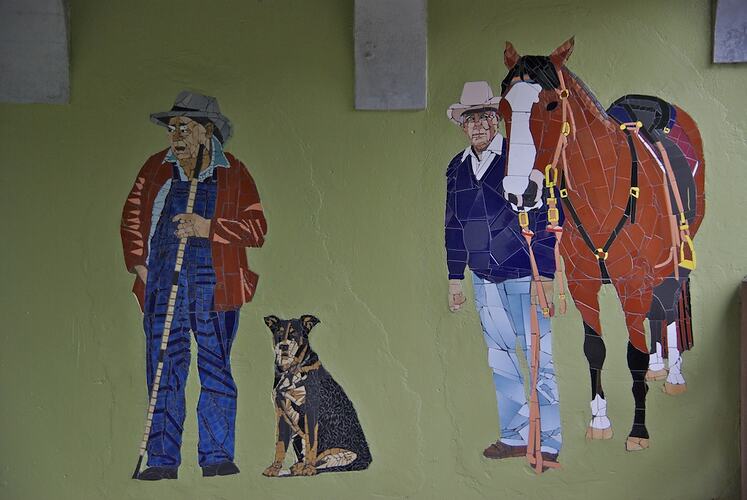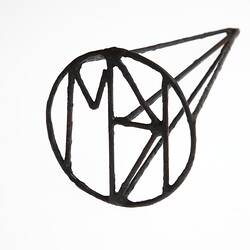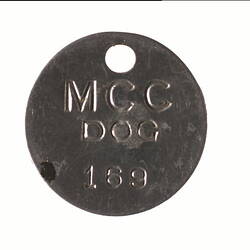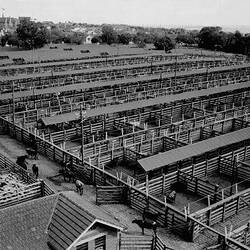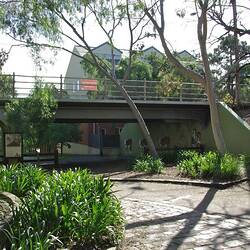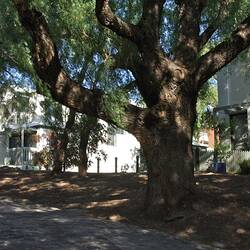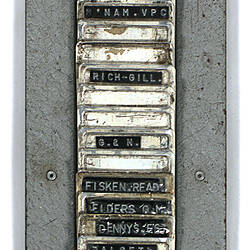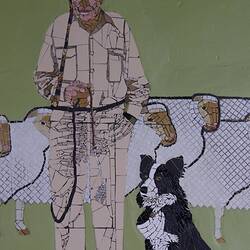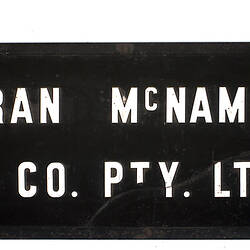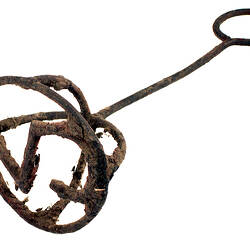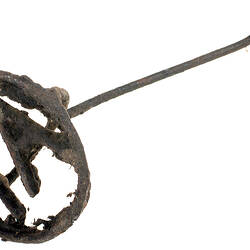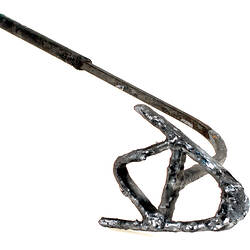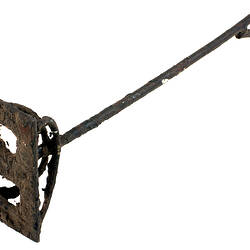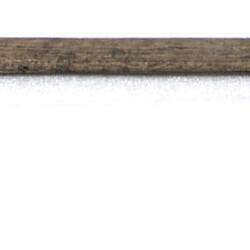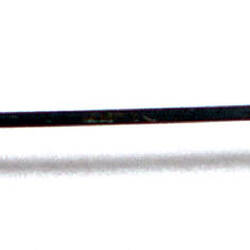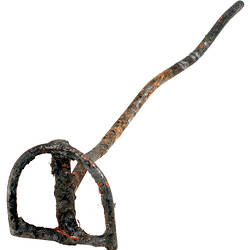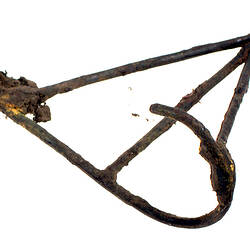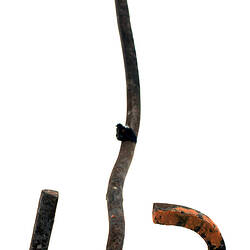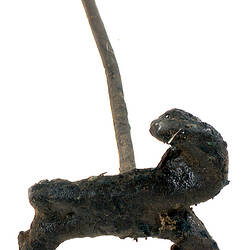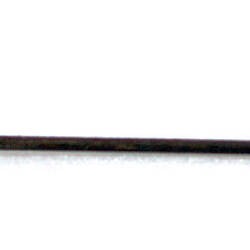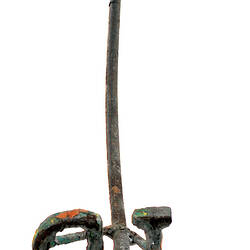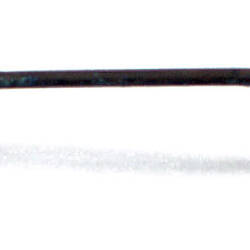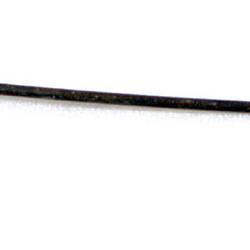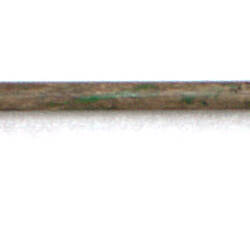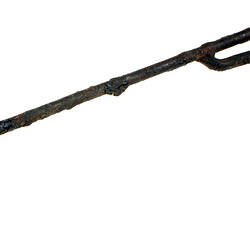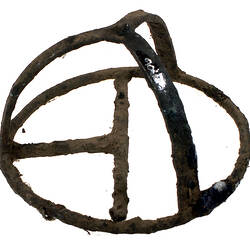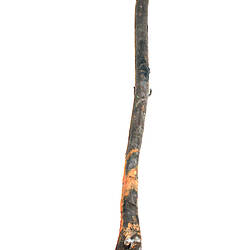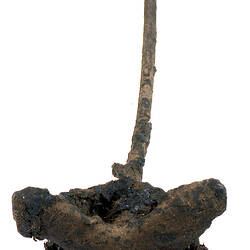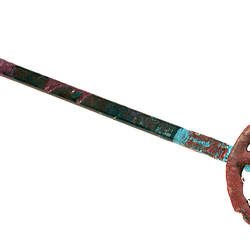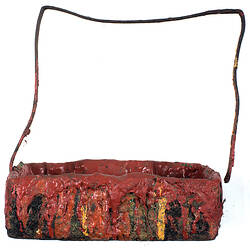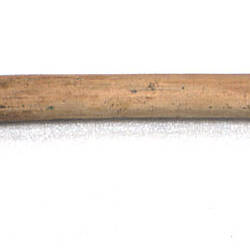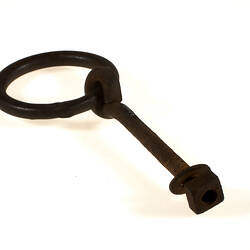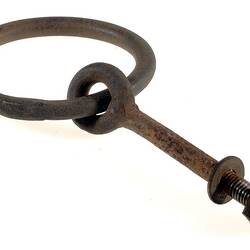The drover is an iconic image within Australian folklore and is an integral part of the history of the Newmarket Saleyards. From the 1850s, stock were brought to Newmarket "on the hoof", meaning drovers delivered the stock to market by horseback usually with the use of dogs. Drovers brought in stock for sale from as near as Keilor and Deer Park and from as far away as Queensland and the Northern Territory, fattening mobs of bullocks all the way to the Saleyards. Drovers often travelled with cattle mobs made up of drafts from different stations and selections, with perhaps 10 to 20 different owners in his mob. Skilled stockmen who drove sheep and cattle over long distances were sometimes known as "overlanders".
As well as the travelling drovers employed by landowners, breeders or farmers, drovers also worked the Saleyards employed by the Stock and Station Agents who held offices at the market. They generally started their day at around 6.30am or 7.30am and would finish between 3.00pm and 5.00pm, working five days a week in all weather conditions - heat, rain and frost. Drovers moved stock from railway sidings to the saleyards; through drafting, receiving, penning and selling yards; from the saleyards to the adjoining abattoirs; branded stock that had been sold; or loaded stock onto trucks to be transported. Drovers would usually work with their own dogs, generally more than one and often up to 25 dogs working for them moving stock or replacing dogs that were being rested. Drovers supplied their own dogs, but if they worked for a company they often received a 'dog allowance'.
Drovers were also responsible for tracking the movement of stock for the Agents. At the Newmarket Saleyards a drover's room was located next to the railway office where the drovers could wait until the railway clerks passed on consignment dockets showing the number of stock consigned to their care. They would herd the cattle or sheep into holding yards and would then leave a ticket or 'Stock Pass' in the box allocated to the agent they were working for. The pass indicated the number of animals delivered to the pens. Drafters were employed by agents and often worked throughout the night, sorting the stock into various categories, ready for start of sales. After the sale, the drovers collected their passes which indicated the number of animals to be taken out of the saleyards. This number had to tally with the number counted by the Melbourne City Council employee as the livestock passed through "The Back Gate" at the Epsom Road underpass, the Main Lane, or any other delivery outlet. The numbers on the pass were used to calculate the yard dues and charges which had to be paid by the agents. Drovers were an integral and indispensable part of the Saleyards. Even after drovers were a rare sight in the Australian rural landscape, they remained a prominent figure at the Newmarket Saleyards.
References:
Living Museum of the West 199-, The story of Newmarket Saleyards, Living Museum of the West, Kensington, Victoria.
Peck, HH. 1974, Memoirs of a stockman, Stock and Land Publishing Co, Melbourne.
Vincent, K. 1992, On the fall of the hammer: a personal history of Newmarket saleyards, Lee White ed, State Library of Victoria, Melbourne.
More Information
-
Keywords
-
Authors
-
Article types
